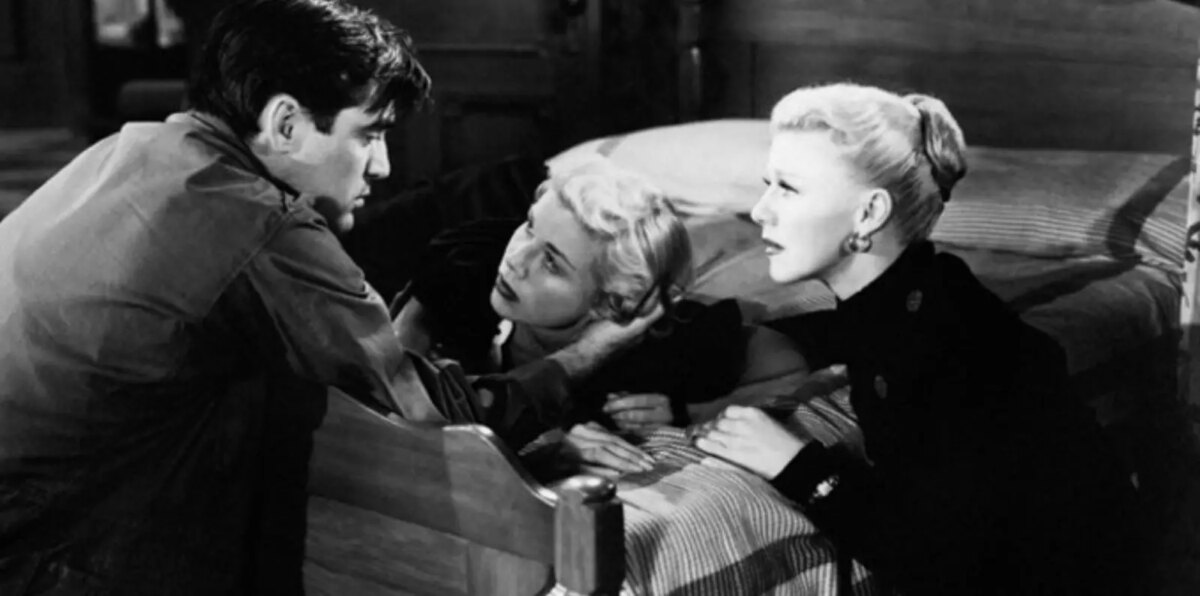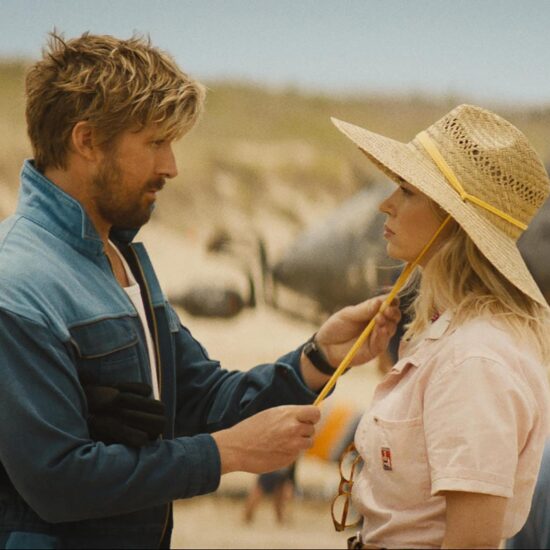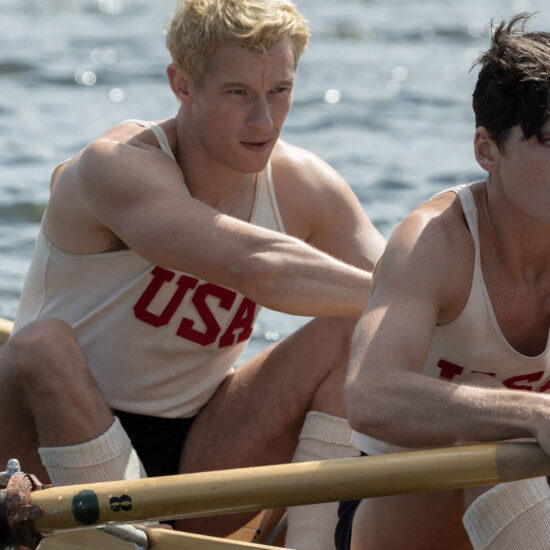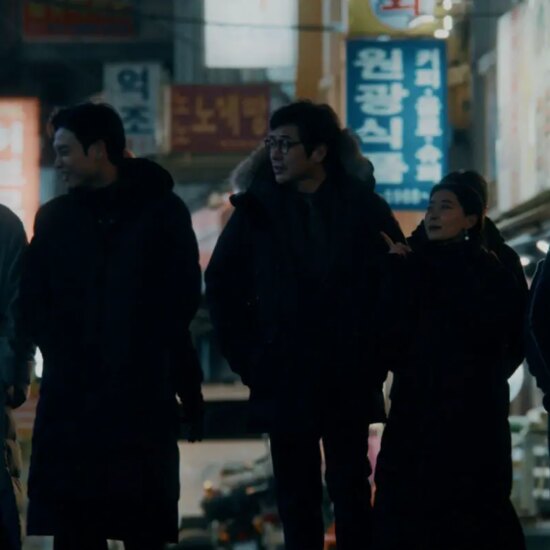
100 YEARS OF WARNER BROTHERS FILM REVIEW! Reagan battles the Klu Klux Klan in director Stuart Heisler’s forgotten noir Storm Warning. Model Marsha (Ginger Rogers) jumps off a bus in Rock Point, a tiny town in the South, for a surprise visit to her sister Lucy (Doris Day), who she hasn’t seen in two years. Even though it’s only 10 PM, all the shops are closing, even the late nite diner. While walking through the darkened streets to the town recreation center where her sister works, Marsha suddenly hears a commotion. Hiding around a corner, she sees a swarm of hooded Klansmen dragging a man out of the jail. She sees the mob in sheets murder him in the street as well as the faces of two Klansmen who had their hoods off. She runs off to find her sister before the police arrive.
District attorney Burt Rainey (Ronald Reagan) smells a rat, as the murdered man was an undercover reporter working to expose the Klan. Marsha finds Lucy and tells her about the Klan murder she witnessed. Lucy tells Marsha to come home with her, as her new husband will know what to do. When Lucy introduces her husband Hank (Steve Cochran) to Marsha, her blood freezes, as Hank is one of the Klansmen she saw without a hood. When Lucy tells Hank that Marsha witnessed the murder that night, Hank’s face goes very dark.
“She sees the mob in sheets murder him in the street as well as the faces of two Klansmen…”
Storm Warning is one of those movies you can’t believe you haven’t heard of. Why isn’t everybody talking about the movie where Ginger Rogers is whipped at a cross burning? How come I found Kiss The Blood From My Hands deep in the noir bin decades before discovering this flick? It is probably due to the Reagan factor. The two most well-known Reagan movies are Bedtime For Bonzo, where he stars with a monkey, and That Hagen Girl, where he plays the possible father of a bastard Shirley Temple. Storm Warning isn’t the humiliation magnet that those films are, Reagan comes off pretty well in this.
Reagan’s hatred of the homegrown fascism that runs the town seems genuine, meaning he must be a better actor than he is given credit for. Day wears her naivety like a two-story Easter bonnet. She masters the wide-eyed innocent. This is Rogers’ show, though. She goes through a thousand looks of disgust and disdain. She can move her face as well as her feet. Heisler pulls off some very sinister noir effects, like all the lights going out around Rogers when she is walking through town. The Klan sequences are beyond horrifying, with a churning bloodbath of hoods and shadows of flame.
One of the oddest angles of the script by Daniel Fuchs and Richard Brooks is the banishment of any mention of the Klu Klux Klan’s racist, genocidal aims. It is almost as if most audiences in 1951 wouldn’t see the Klan’s bigotry as damning enough. So instead, Storm Warning focuses on the Klan’s mob savagery that ranges from bullying to murder. While on the surface, they present themselves as a community service that holds down the night rape. They are actually a parliament of hooligans with permission for havoc. There is also another, darker secret that the Klan hides from their own members, and the reporter was seeking to expose. That dark secret is high administrative fees. There is a huge slice taken from the member dues, robe sales, and laundry fees that go straight into the pockets of the Grand Wizard. The Klan’s good reputation would be ruined if the word got out. Speaking of reputation, Storm Warning deserves to have one. This was a more than decent noir that has plenty of roller coaster plunges for the nerves—time to take a look under this particular hood.














